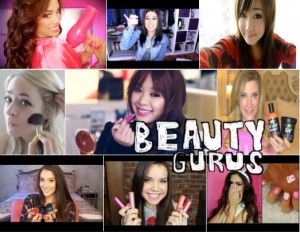Recently, 26-year old YouTube beauty guru Michelle Phan launched her cosmetics brand in collaboration with beauty giant Lancome. Just shy of 5 million subscribers, her YouTube videos have made her a millionaire and an Internet celebrity.
At the beginning of American consumer culture in the early twentieth century, women owned local service-oriented shops and shared beauty rituals as a part of “the personal cultivation of beauty – the original meaning of ‘beauty culture’” (as described by historian Kathy Peiss in her book Hope in a Jar: The Making of America’s Beauty Culture). This beauty culture was contemporaneous with the first wave of feminism, and its founders employed women in their businesses, actions that Peiss characterizes as “a form of feminism.”
Now, YouTube beauty gurus cultivate community around beauty, reviewing products and demonstrating various makeup “looks” through tutorials that mostly mimic those seen on fashion runways, on celebrities, and in women’s magazines. An underlying theme in their communication indicates how much more confident they feel about their appearance when they use specific products or craft their appearance in certain ways. Such declarations of empowerment are encapsulated in a former tagline of one vlogger: “conquering the world one lipgloss at a time.”
Certainly, in an environment that places immense pressure on women to improve their appearance (through makeup, hair styling, diet, exercise, cosmetic surgery, and so on), beauty vloggers have cultural cachet. Through their expertise about beauty products/techniques, they can gain subscribers and, if they develop a sufficient following, they can acquire financial power via the YouTube Partner Program, through which vloggers earn anywhere from a few thousand dollars to six figures per month. In addition, as in Phan’s case, they can leverage their online popularity/visibility to build their own beauty brand.
For many women, engaging with makeup of various colors and textures can be an aesthetic, artistic, playful, and adventurous experience. The issue becomes sticky, however, when women accept makeup as not just a means of empowerment, but as the tool for agentic self-realization. This point holds especially true when cosmetics are promoted by a beauty guru (who may be doubling as a brand ambassador for a beauty brand or for her own brand) whose primary interest aligns more with consumerism and conformity than with creativity and self-expression. In this case, beauty gurus’ expertise and their videos work more as infomercials than as vehicles for women’s inspiration via beauty, thereby benefitting corporate — instead of women’s — power.
So, then, I ask: What does the beauty expertise of vloggers and the women who watch them signal about current cultural values regarding female empowerment? Critically thinking about the role of beauty (and, specifically, the cosmetics industry) in past and present consumer culture and how these dynamics relate to women’s lives is an important place to start the conversation.



Comments 1
Andrean Tantiono — September 14, 2014
nice share guys keep up the good work
Majas pleonasme
Medionize